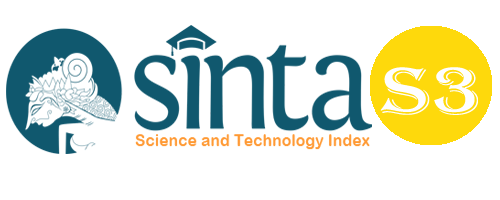Effect of Work Safety and Work Healthy Towards Employee's Productivity in PT. Sisirau Aceh Tamiang
Abstract
This study aims to determine the effect of work safety and work healthy on employee productivity in the production department at PT. Sisirau Aceh Tamiang. This research is a type of quantitative research with a sample of 45 people. The data analysis method used is multiple linear regression analysis. Hypothesis testing is done through t test, F test, and the coefficient of determination (R2). Regression equation results obtained Y = 2.255 + 0.314X1 + 0.811X2 means that the constant value of 2.255 is the value of employee productivity before being influenced by work safety and health. The work safety regression coefficient is 0.314 and is positive, meaning that if work safety is increased the employee's work productivity will increase by 0.314 with a tcount> ttable (2.333> 1.68195) and significant (0.025 <0.05). The work health regression coefficient is 0.118 and is positive, meaning that if work health is improved the employee's work productivity will increase by 0.811 with a tcount> ttable (8.063> 1.68195) and significant (0.000 <0.05). The coefficient of determination (R2) of 0.614 or 61.4%, which means the work safety and health variables influence the work productivity of employees by 61.4% and the remaining 39.6% is influenced by other variables not examined in this study.
Keywords
Full Text:
PDFReferences
Arikunto, Suharsimi. (2010). Prosedur Penelitian: Suatu Pendekatan Praktik, revision edition, Jakarta: Rineka Cipta.
Bangun, Wilson. (2012). Manajemen Sumber Daya Manusia. Jakarta: PT. Gelora Aksara Pratama.
Hasibuan, Malayu S.P, (2012), Manajemen Sumber Daya Manusia, cetakan keenam belas, Jakarta: PT. Bumi Aksara.
Irfansyah. (2020). The Duties and Functions Performance of Aceh Human Resources Improvement Institutions inScholarship Study Program Implementation in Aceh Government. Britain International of Humanities and Social Sciences Journal: 160-165.
Keputusan Menteri Tenaga Kerja No. 13 Tahun 2011 tentang NAB (Nilai Ambang Batas).
Kuswati, Y. (2019). Motivation Role in Improving Work Effectiveness. Budapest International Research and Critics Institute (BIRCI-Journal) : Humanities and Social Sciences, 2(4); 281-288.
Latief, A. Nurhalina. Medagri, E. & Suharyanto, A. (2019). Pengaruh Manajemen Pengetahuan, Keterampilan dan Sikap terhadap Kinerja Karyawan. JUPIIS: Jurnal Pendidikan Ilmu-ilmu Sosial, 11 (2): 173-182.
Mangkunegara, Anwar Prabu, (2009), Manajemen Sumber Daya Manusia Perusahaan, Bandung: PT. Remaja Rosdakarya.
Mondy, R. Wayne. (2008). Manajemen Sumber Daya Manusia, edisi kesepuluh. Jakarta: Erlangga.
Muhammad and Hidayat, R. (2019). The Relationship between the Transformational Leadership Style of Madrasah Head and Work Discipline with the Performance of Teachers atMTsN Lima Puluh Batu Bara. Britain International of Linguistics, Arts and EducationSciences (BIoLAE) Journal, 175-182.
Sedarmayanti. (2007). Manajemen Sumber Daya Manusia Reformasi Birokrasi Dan Manajemen Pegawai Negeri Sipil. Bandung: PT. Refika Aditama.
Sugiyono. (2011). Statistik untuk Penelitian. Bandung: Alfabeta.
Sutrisno, Edy. (2009). Manajemen Sumber Daya Manusia, edisi pertama. Jakarta: Kencana Prenada Media Group.
Yuniarsih, Tjutju dan Suwatno. (2013). Manajemen Sumber Daya Manusia, cetakan keempat. Bandung: Alfabeta.
DOI: https://doi.org/10.33258/birci.v3i2.887
Article Metrics
Abstract view : 334 timesPDF - 219 times
Refbacks
- There are currently no refbacks.

This work is licensed under a Creative Commons Attribution-ShareAlike 4.0 International License.

This work is licensed under a Creative Commons Attribution-ShareAlike 4.0 International License.

_.gif)

















_.gif)



